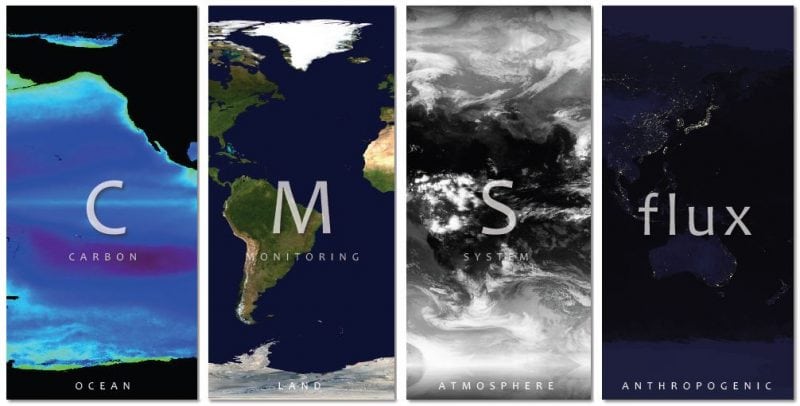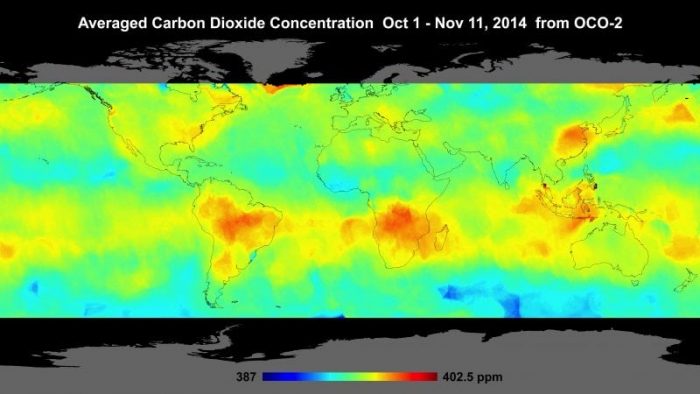
The Trump Administration has recently rescinded funding for a program which measures atmospheric levels of greenhouse gases. NASA’s Carbon Monitoring System (CMS) has played an important part in measuring concentrations of greenhouse gases in the atmosphere, and its elimination will likely stymie efforts to combat global climate change.
NASA’s Carbon Monitoring System
NASA’s Carbon Monitoring System cost approximately $10 million a year and was responsible for observing both sources of carbon and carbon sinks, then creating detailed models used to understand how carbon flowed across the planet. The Trump administration recently cut all funding for the CMS, according to Science. Without systems of tracking carbon such as the CMS, verifying the efficacy of plans to cut national carbon emissions becomes extremely difficult. Kelly Sims Gallagher, the director of the International Environment and Resource Policy Center at Tufts University says that the decision was “a grave mistake” and that there is no way to ensure countries are adhering to the tenets of the Paris climate accord if you can’t measure reductions in emissions.
The decision to cut funding for CMS was just one portion of a substantial effort by the Trump administration to undermine climate research. The administration has repeatedly proposed budget cuts to many environmental/climate science programs including many programs falling under NASA’s Earth Science division. NASA’s Earth Science programs include not only the CMS program but also Orbiting Carbon Observatory 3, a program using orbital sensors designed to “investigate important questions about the distribution of carbon dioxide”.

The OCO-3. Photo: NASA JPL, Public Domain
Despite the wishes of the Trump administration to substantially reduce funding for NASA’s Earth Science programs, the 2018 budget plan passed back in March by Congress largely ignored these wishes and preserved funding for many science programs. The CMS program was a notable exception to the preservation of funding, as the spending deal contained no mentions of it. This means that the while the program will be able to finish any research funded by current grants, no further grants will be given to the project.
Since 2010 the CMS program has provided crucial data for at least 65 different projects intended to improve our understanding of how forests keep carbon out of the air. The U.S. Forest Service utilizes data collected by the CMS to conduct inventories of carbon stocks within Alaska’s remote interior, where doing up-close assessment of timber and soil is impractical. This allowed the forest service to make a complete inventory of Alaskan carbon while spending far less money than normal.
It’s not only research into Alaskan forests that benefits from CMS data. Data collected by CMS has also been integral in preventing the deforestation of tropical forest in developing nations. The United Nations’ REDD+ program is dedicated to preventing deforestation and environmental degradation overall, and developing nations often partner with the program to control deforestation within their borders. Data gained from CMS allowed countries to more accurately assess if their deforestation prevention programs were working, in order to gain REDD+ funding.

A carbon map created by NASA. Photo: NASA, Public Domain
Beyond these two important applications, CMS data also assisted in other smaller carbon monitoring projects. The CMS program was able to track dissolving carbon flowing into the Pacific Ocean from the mouth of the Mississippi River. It even assisted the city of Providence in creating a complete inventory of greenhouse gas emissions and identify ways to reduce those emissions.
Reactions To The Cancellation
Daniel Jacob, an atmospheric chemist at Harvard had his research backed by the CMS program. Jacob noted that with the OCO-3 program set to launch sometime in the early 2020s, the CMS program would have played a pivotal role in stitching together the observations of the OCO-3 system into a coherent whole. Jacob bemoaned the decision to kill the programme, calling it “a total shame“. Other climate researchers – such as George Hurtt, a carbon researcher from the University of Maryland, and president of the Woods Hole Research Center, Phil Duffy – echoed these sentiments.
Though NASA didn’t provide a specific reason for the CMS program’s cancellation, saying only that there were “budget constraints and higher priorities within the science budget”, Duffy argues that the CMS program was a target for the Trump administration because of the program’s association with various climate treaties. Duffy says that while monitoring of the carbon cycle with satellites will probably continue, Europe will be bearing more of the responsibility. Duffy says that as low-carbon economies are likely to proliferate in the future we (the US) “really shoot ourselves in the foot if we let other people develop the technology”.
The decision to cut funding for the CMS program comes shortly after Jim Bridenstine, former representative for Oklahoma’s 1st congressional district, was made administrator of NASA. ScienceAlert reports that Bridenstine has been a vocal opponent of NASA’s Earth Science programs and that he denies that humanity has a substantial impact on the Earth’s climate. In the past, Bridenstine has apparently even supported the idea of ceasing Earth Science research in NASA altogether.
Bridenstine has recently made commitments to following the guidance suggested by Earth Science decadal surveys after facing criticism from Congress. However, environmental researchers and activists remain skeptical of Bridenstine’s qualifications and motivations. Critics of Bridenstine view the cancellation of the CMS program as confirmation of their worst fears.
Other Policies Also Undermine Efforts To Reduce Climate Change
The Trump administration has also made several other movements which seem to undermine efforts to curb greenhouse gas emissions. The administration has proposed freezing the standards of greenhouse gas emissions for auto manufacturers from 2020 to 2026, and also looks to prevent California from creating its own tougher standards for vehicle emissions. California has been a leader in cutting emissions from automobiles since the mid-1960s and in 1972 was given the right to create its own emissions standards. At least 12 other states and Washington DC often defer to California’s decisions regarding emissions limits.
The decision to revoke California’s right to self-determine emissions limits has been perceived by many as a substantial overreach of federal power, notes Margo Oge, former director of the EPA’s Office of Transportation and Air Quality.
This right has been reaffirmed many times during the last 45 years and over the course of eight administrations, five of which were Republican. On May 1st, 17 states and Washington D.C. filed a lawsuit against the Trump Administration over its auto policy, testament to the federal move’s perception as a wide overreach on state’s rights.
The decision to remove funding for the CMS system comes at a crucial time in the fight against climate change. April saw levels of greenhouse gases become higher than at any point in human history. Despite these setbacks, more governments around the world continue to push for reductions in greenhouse gases, with British Columbia recently setting a goal to cut reductions of greenhouse gas emissions by 40% (of 2007 levels) by 2030.









